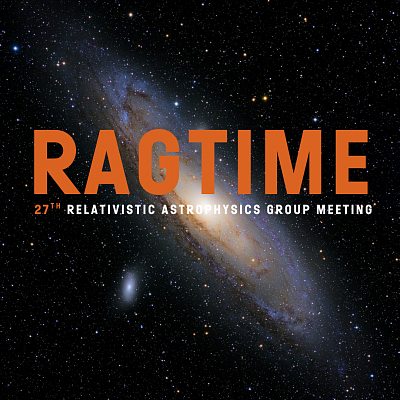- Lucie Dospivová
- ustav
- 15.10.2025
- Institute of Physics in Opava
How to observe comet C/2025 A6 Lemmon?
A brighter comet, designated C/2025 A6 Lemmon, can now be seen in the evening sky. The comet will come closest to Earth in the second half of October and reach its maximum brightness, at which point experienced observers could faintly see it with the naked eye in a dark sky far from cities. However, it can definitely be seen with a small hunting telescope and looks beautiful in photographs. When and where is the best place to look for it?- Lucie Dospivová
- ustav
- 12.09.2025
- Institute of Physics in Opava
Join us at 27th edition of RAGtime
The Institute of Physics at Silesian University in Opava invites you to the 27th annual RAGtime international conference, which focuses on the latest findings in theoretical and relativistic astrophysics research.- Lucie Dospivová
- ustav
- 09.06.2025
- Institute of Physics in Opava
The season of noctilucent clouds has begun
From early June to mid-July, Central Europe offers an annual opportunity to observe an unusual type of cloud formation known as noctilucent clouds (NLC).- Lucie Dospivová
- ustav
- 17.03.2025
- Institute of Physics in Opava
A partial solar eclipse will occur on Saturday 29th March 2025
On Saturday 29th March 2025 there will be a solar eclipse observable from central Europe. It will only be partial, but will be accompanied by very favourable viewing conditions. The Czech Republic will be on the edge of the event zone, which will be observable in northeastern America, virtually all of Europe and parts of Asia. In our territory, the eclipse will be visible around noon at an altitude of more than 40° above the horizon, and at its maximum phase the Moon will cover up to 22 per cent of the diameter of the solar disk (north-western Bohemia).- Lucie Dospivová
- ustav
- 11.03.2025
- Institute of Physics in Opava
Saying goodbye to our beloved colleague prof. Maurizio Falanga
On Thursday, March 6, 2025, Prof. Maurizio Falanga passed away. He was a longtime collaborator of the Institute of Physics in Opava.- Lucie Dospivová
- ustav
- 02.12.2024
- Institute of Physics in Opava
Neutron star research in Switzerland
Is it possible to work with a renowned professor of astrophysics at the International Space Science Institute (ISSI) in Bern, Switzerland, as part of your studies? A student of the PhD programme Theoretical Physics and Astrophysics at the Institute of Physics of the Silesian University in Opava, Mgr. René Šprňa went to see for himself at the turn of September and October this year.- Lucie Dospivová
- ustav
- 14.10.2024
- Institute of Physics in Opava
Erasmus+ students explored Opava!
At the beginning of this month, the individual departments of the Silesian University in Opava, which are responsible for the Erasmus+ agenda, prepared a fun and educational programme for foreign first-year students. The School of Business Administration in Karvina also joined the programme with their students.- Lucie Dospivová
- ustav
- 23.08.2024
- Institute of Physics in Opava
We are hiring: Researcher position open!
SELECTION PROCEDURE IS FINISHED. We are excited to announce that the Institute of physics in Opava does currently have an open position for a Researcher to join our team.- Lucie Dospivová
- ustav
- 02.08.2024
- Institute of Physics in Opava
The image of comet Olbers was published by NASA
On Thursday, August 1st, 2024, NASA selected a photograph titled "Comet Olbers over Kunětice Castle" as its prestigious Astronomy Picture of the Day. The image was captured by Petr Horálek from the Institute of Physics in Opava. Taken on July 28th, 2024, near the village of Kunětice, the photograph showcases the periodic comet Olbers as it appeared in the evening sky, positioned behind the iconic East Bohemian landmark, Kunětická hora. The comet, which is currently visible with small binoculars, can still be observed in the coming days, though it is gradually moving away from Earth.- Lucie Dospivová
- ustav
- 23.07.2024
- Institute of Physics in Opava
















